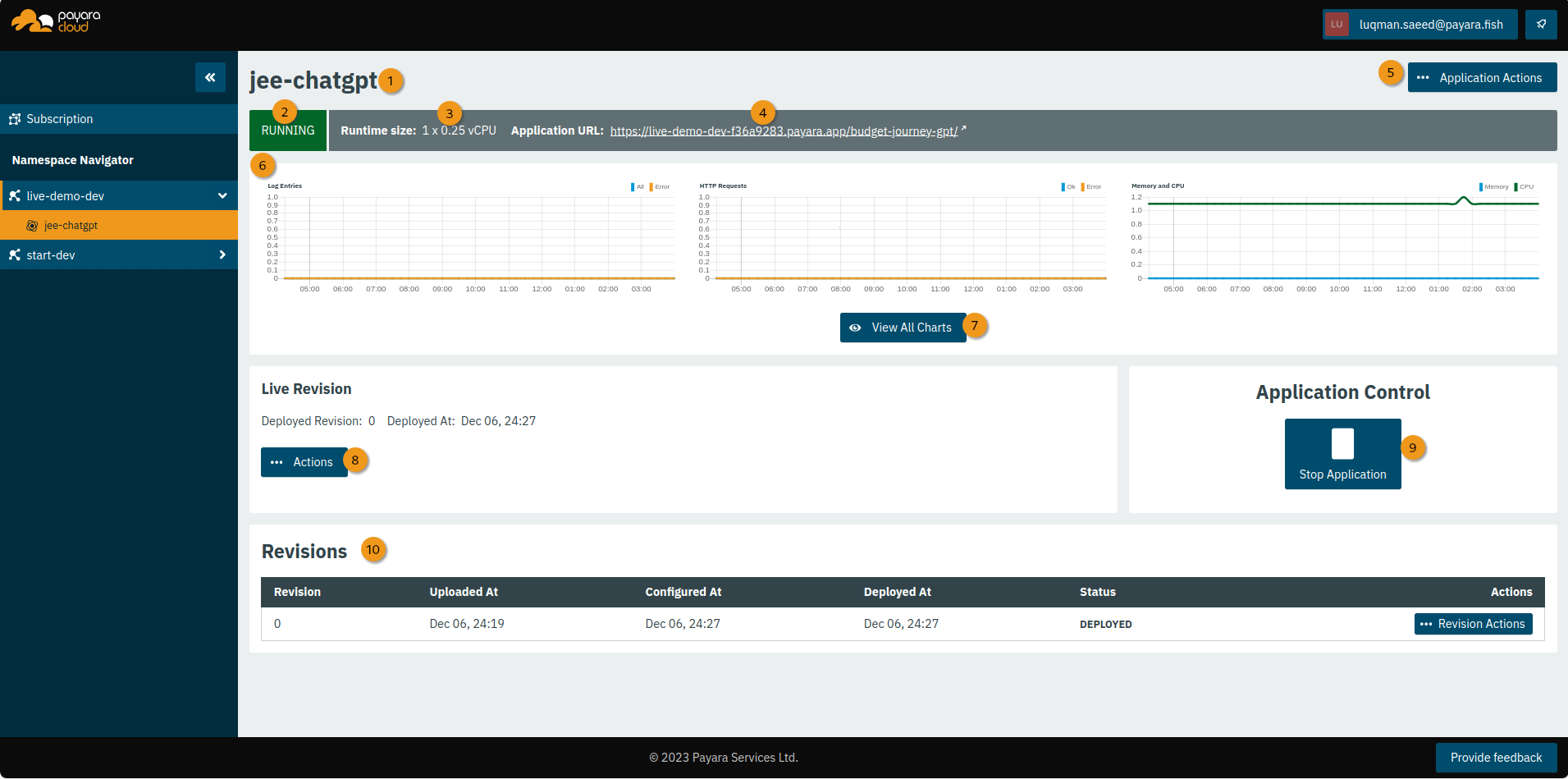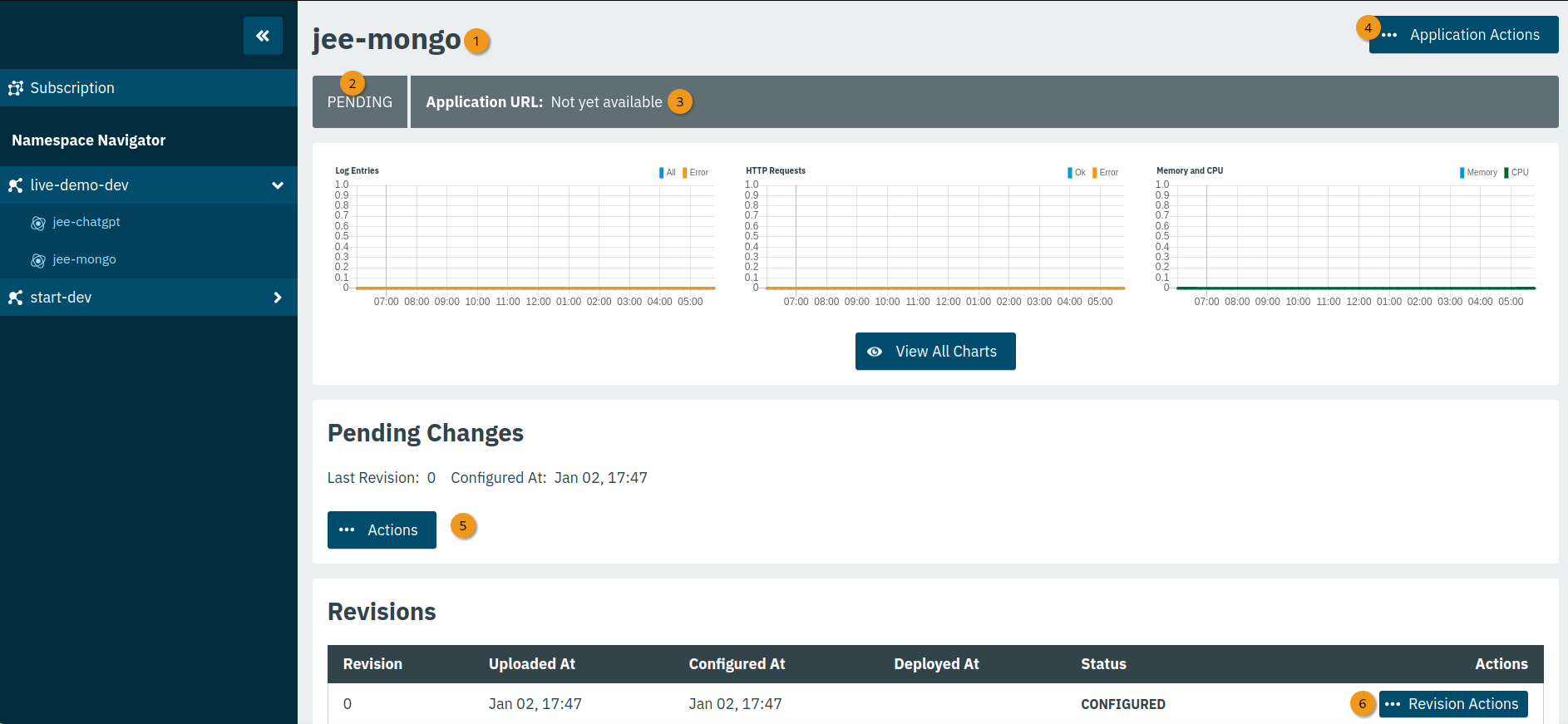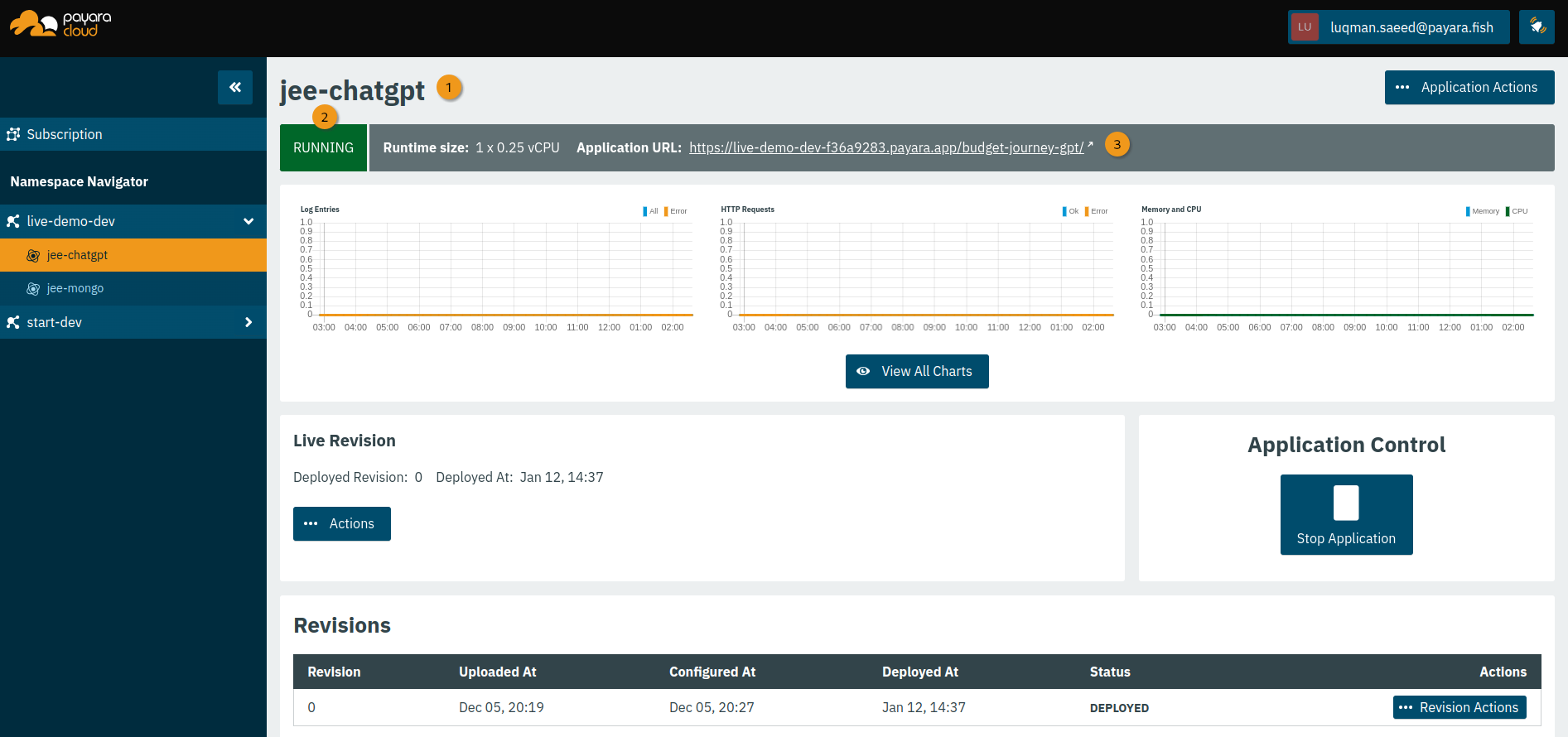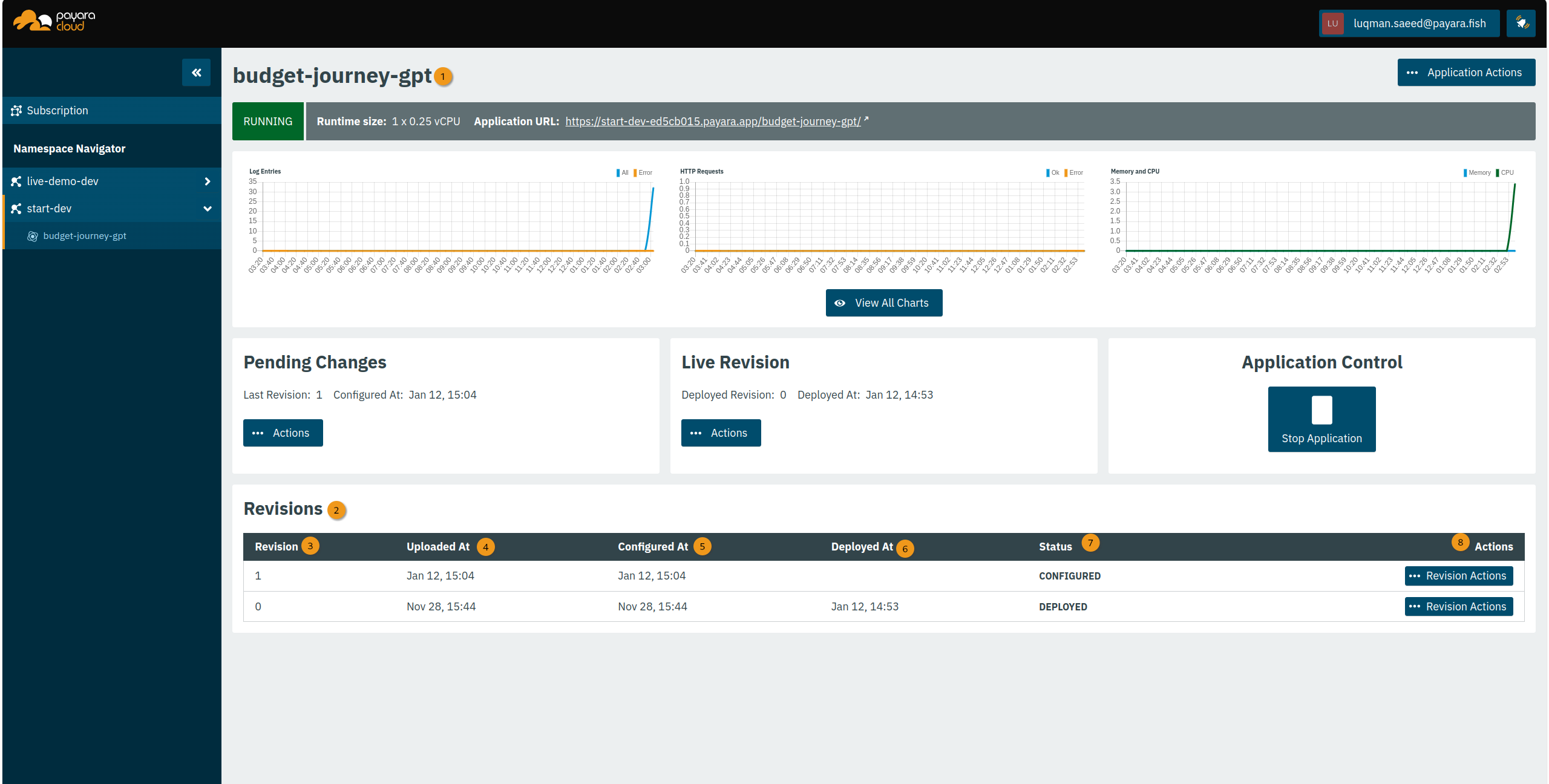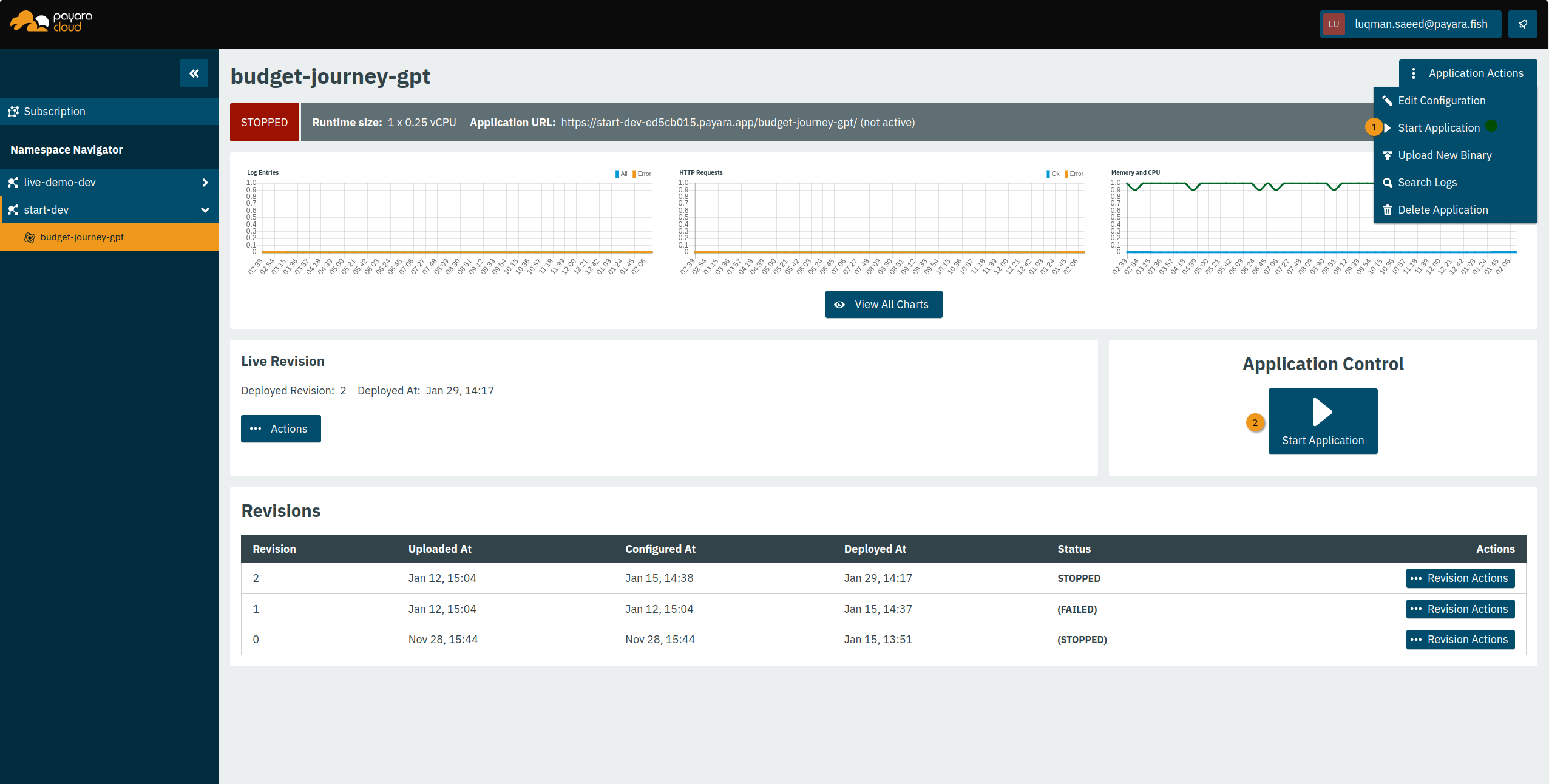Navigating the Application Detail Page
The application detail page shows all relevant information about a specific application.
-
❶ Application Name: Displays the name of the application you are currently viewing
-
❷ Application State: Indicates whether the application is RUNNING.
-
❸ Runtime Size: Shows the configured runtime size for this application
-
❹ Accessible URL: The internet URL for the application. Note: This URL resolves to the application only if it is in the RUNNING state; otherwise, a 502 error page appears
-
❺ Application Management Menu: Includes options to start, edit application configuration, upload a deployment artifact (.war file), search application logs, and delete the application
-
❻ Graphical Application Metrics: Visual representation of application performance
-
❼ More Metrics: Button to view extended graphical application metrics
-
❽ Second Application Management Menu: Same functions as in ❺
-
❾ Start/Stop Button: Toggle to start or stop a configured application
-
❿ Application Revisions Table: Displays revision number, upload, configuration, application status, and a menu for revision actions (view/edit)
Understanding Application States
Applications hosted on Payara Cloud can be in various states throughout their lifecycle.
PENDING State
An application first enters the PENDING state when it is uploaded but not yet deployed.
-
❶ Application Name: Displays the current application’s name
-
❷ PENDING State: Shows that the application is ready for deployment
-
❸ Deployed Application URL: This field remains blank as the application is yet to be deployed
-
❹ Management Menu: Provides options to edit, deploy, upload a new .war file, access logs, and delete the application
-
❺ Duplicate Management Menu: Identical ❹
-
❻ Revision Table Menu: Offers options to view, edit, or deploy the application. The 'Deployed At' date is absent since the application hasn’t been deployed
RUNNING State
An application is in the RUNNING state when it has been successfully deployed and is accessible online.
-
❶ Application Name: The current application’s name
-
❷ RUNNING State: Indicates the application is active and deployed
-
❸ Application URL: The URL through which the deployed application is accessible
STOPPED State
A STOPPED application is one that was previously running but has been manually halted.
-
❶ Application Name: The current application’s name
-
❷ STOPPED State: Shows that the application is currently not active
-
❸ Application URL: URL of the stopped application, which leads to a 502 error when accessed
-
❹ Deployed time stamp: Indicates the last deployment time of the application
-
❺ Start Application Button: Used to restart the application, transitioning it back to the RUNNING state
Application Revisions: Managing and Tracking Changes
Over its lifetime, an application in Payara Cloud undergoes several revisions, each representing a unique binary upload.
-
❶ Application Name: Name of the application under review
-
❷ Revisions Table: Lists all revisions of the application
-
❸ Revision Number: Identifies the sequence number of each revision
-
❹ Uploaded Date: Revision uploaded/created date
-
❺ Configured Date: The date when the uploaded binary was configured
-
❻ Deployed Date: The deployment date of the current revision
-
❼ Revision Status: The current status of the revision
-
❽ Actions: Menu for viewing, editing, or deploying revisions
The revisions table is a critical tool for managing your application. It allows to roll back to previous versions as needed. It provides history of the binary artifact’s status at the time of each upload This feature ensures flexibility in version control and deployment strategies.
Starting, Stopping, and Scaling Applications: A Guide
You can start an application in a STOPPED State by using any of the available options.
-
❶ Application Actions Menu: Start an application from the application action menu
-
❷ Start Application Button: To start the application
Starting a stopped application through any of the above options transitions the application back to the RUNNING State
